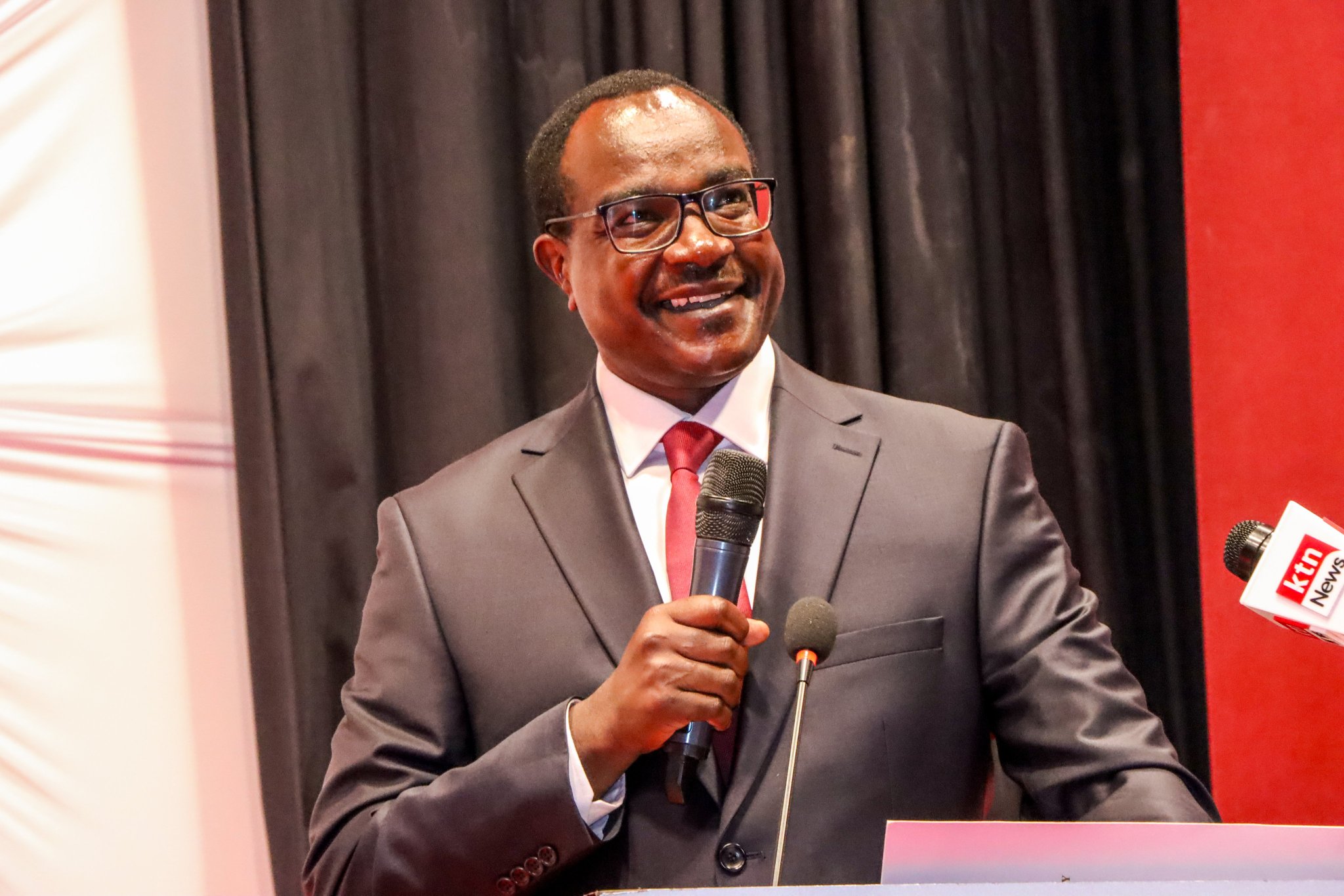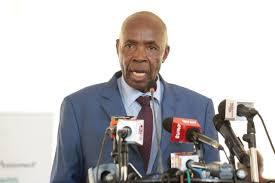2025 new reduced School Fees structure and guidelines for all secondary schools in Kenya; Education Ministry releases guidelines

The Ministry of Education has released the 2025 school fees structure for all secondary schools under the government’s Free Day Secondary Education (FDSE) programme.
The new guidelines shows the amount of school fees to be paid by parents in National Schools, Extra County Schools, County, Sub-county and special schools. Here are the new guidelines from the Ministry;
GUIDELINES ON IMPLEMENTATION OF FREE DAY SECONDARY EDUCATION FOR 2025
Priorities of secondary education are guided by strategic objectives articulated in the Medium Term Plan III of Vision 2030 and the Constitution of Kenya In this regard, the Government of Kenya (GOK) will continue with its effort to maintain one hundred percent (100%) transition from primary to secondary education.
Hence, the decision to enhance the maintenance and improvement to help schools meet some maintenance and development needs will continue to apply in 2025.
This budget component will be used to improve existing infrastructure and in some cases put up new facilities to ease pressure on existing facilities.
The guidance on the use of this vote as provided during the actual disbursement of funds will continue to apply in 2025.
Schools will therefore continue to operate with merged votes in 2025 to enable these schools meet some of their critical needs in a flexible manner.
FDSE CAPITATION TO SCHOOLS
Government subsidy (Capitation) to schools to actualize Free Day Secondary Education (FDSE) will be KES. 22,244.00 annually per learner as stipulated in table below;
Table 1: FDSE Structure
| S/NO. | ITEM | AMOUNT (KES) |
| 1 | Tuition | 4,144.00 |
| 2 | Medical/ Insurance | 2,000.00 |
| 3 | Activity | 1,500.00 |
| 4 | SMASSE | 200.00 |
| 5 | Other Vote Heads | 9,400.00 |
| 6 | Maintenance and Improvement | 5,000.00 |
| 7 | Grand Total | 22,244.00 |
Other vote heads: local travel and transport, Administration, Electricity, Personnel emolument.
Disbursement of capitation to schools will be done in the ratio 50:30:20.
Schools are directed that they capture all learners in order for them to get full funding. This Government subsidy is disbursed to public schools under the following conditions:
- The school must be duly registered and headed by a TSC appointed principal.
- The school must be registered on the NEMIS platform
- The school must register and update learners records in the NEMIS platform
- All bank accounts operated by the school must be registered in NEMIS and with MOE at all its levels.
Under the Operation account, schools may seek authority from the CEBs to wire savings or surplus funds from one item to another when it is absolutely necessary but the same does not apply for tuition account.
It is further clarified that the personnel emolument will not be restricted to payment of Non teaching staff.
Get all the latest education news here; Education News Portal.
2025 SCHOOL FEES STRUCTURES
1.1.1 Day Schools
The Government of Kenya will continue to offer free day schooling and the fees structure for day schools in shown in Table 2.
Table 2: Fees Structure for Day Schools
Other vote heads Local travel and transport, Administration, Electricity, Personnel
emolument
1.1.2 Boarding Schools
The government will provide capitation for each learner in a boarding school that is equal to capitation for each learner in a day school.
In order to meet the cost of boarding, parents will pay the boarding fees applicable to different categories of schools and location.
Related;
New secondary school fees structure 2025 (Education Ministry reduces fees)
Fees Structure Guidelines for Secondary schools 2025
Tables 3, 4 and 5 below provide the details of the fees.
Table 3: 2025 Boarding school’s fees structure- category A*
| S/NO. | VOTE HEAD | G.O.K | PARENT | TOTAL |
| 1 | Teaching, Learning Materials & Exams | 4,144.00 | 0 | 4,144.00 |
| 2 | Boarding Equipment & Stores | 0.00 | 24,935.00 | 24,935.00 |
| 3 | Maintenance & Improvement | 5,000.00 | 2,000.00 | 7,000.00 |
| 4 | Other Vote Heads | 9,400.00 | 17,267.00 | 26,667.00 |
| 5 | Activity Fees | 1,500.00 | 798.00 | 2,298.00 |
| 6 | Medical & Insurance | 2,000.00 | 0.00 | 2,000.00 |
| 7 | SMASSE | 200.00 | 0.00 | 200.00 |
| 8 | Total School Fees | 22,244.00 | 45,000.00 | 67,244.00 |
*Other vote heads Local travel and transport, Administration. Electricity, Personnel emolument.
Schools classified as Category A are:
- All National schools and
- Extra county schools that are located in the following towns: Nairobi, Mombasa, Nakuru, Kisumu, Nyeri, Thika and Eldoret ONLY.
Table 4: 2025 Boarding schools fees structure- category B*
| S/NO. | VOTE HEAD | G.O.K | PARENT | TOTAL |
| 1 | Teachiing, Learning Materials & Exams | 4,144.00 | 0 | 4,144.00 |
| 2 | Boarding Equipment & Stores | 0.00 | 20,830.00 | 20,830.00 |
| 3 | Maintenance & Improvement | 5,000.00 | 2,000.00 | 7,000.00 |
| 4 | Other Vote Heads | 9,400.00 | 11,670.00 | 21,070.00 |
| 5 | Activity Fees | 1,500.00 | 500.00 | 2,000.00 |
| 6 | Medical & Insurance | 2,000.00 | 0.00 | 2,000.00 |
| 7 | SMASSE | 200.00 | 0.00 | 200.00 |
| 8 | Total School Fees | 22,244.00 | 35,000.00 | 57,244.00 |
*Other vote heads Local travel and transport, Administration, Electricity, Personnel emolument.
Schools classified as Category B* are other boarding schools including extra county schools that are located in other areas other than the town of Nairobi, Mombasa, Nakuru, Kisumu, Nyeri, Thika and Eldoret.
Table 5: 2025 Fees Structure for Special Needs Schools
| S/NO. | VOTE HEAD | G.O.K | PARENT | TOTAL |
| 1 | Teaching, Learning Materials & Exams | 4,144.00 | 0 | 4,144.00 |
| 2 | Boarding Equipment & Stores | 19,053.00 | 8,860.00 | 27,913.00 |
| 3 | Maintenance & Improvement | 5,000.00 | 2,000.00 | 7,000.00 |
| 4 | Other Vote Heads | 9,400.00 | 0.00 | 9,400.00 |
| 5 | Activity Fees | 1,500.00 | 0.00 | 1,500.00 |
| 6 | Medical & Insurance | 2,000.00 | 0.00 | 2,000.00 |
| 7 | Top Up | 12,510.00 | 0.00 | 12,510.00 |
| 8 | SMASSE | 200.00 | 0.00 | 200.00 |
| 9 | Total School Fees | 53,807.00 | 10,860.00 | 67.167.00 |
Other vote heads Local travel and transport, Administration. Electricity, Personnel emolument.
Schools classified as Special needs are those schools that cater for learners with impairment e.g visual, physical, hearing and mental. GOK has enhanced capitation to KES. 53,807.00 distributed in the fees structure shown in Table 5.
The structure includes GOK subsidy of KES. 19,053.00 per learner for Boarding Equipment and stores and a top up grant of 12,510.00 per learner to cater for assistive devices and any additional personnel needed.
Schools are advised to adhere to the fees guidelines provided in the regulations.
To ensure accountability and smooth implementation of the FDSE programe, all schools are required to operate the following bank accounts.
2.0.1 Types of Bank Accounts
Schools are expected to have bank accounts for various purposes and accountability. Each school should operate bank accounts as follows:-
- Tuition account: for banking of tuition funds and all payments should strictly be made by cheques. Funds in the tuition account must be utilized for the procurement of teaching and learning material (TLMs) only.
- Operational Account: – This account is used for banking of all Government subsidies except the tuition Infrastructure Grants as well as Maintenance and improvement funds should be transferred to the school infrastructure Account thirty days upon receipt of the funds.
- Boarding Account: – This account for banking of funds paid by parents for boarding related expenses.
- A Saving Account: This account is for banking funds from the Boarding Account Cash Book that cannot be put to immediate use.
- School Infrastructure Account: – for banking infrastructure grants from GoK and Maintenance and Improvement (M&L) funds. It is illegal to spend grants from any other account. Therefore all grants must be transferred whole into this account.
Schools with income generating activities shall open separate bank accounts for the same. School who receive NGCDF support must open an account for the project as provided for by the CDF Act.
2.0.2 OPERATIONAL PROCEDURES FOR SCHOOL BANK ACCOUNTS
In addition to the above, the following procedures will continue to apply:
- Each account must have a separate cash book;
- All schools must acknowledge the receipt of funds by a letter to the CDE/uploading an official receipt on the NEMIS plat form;
- A receipt is issued to every learner for the capitation amount received for every disbursement;
- Schools must post on their notice boards the amounts received;
- Schools have the freedom to operate a fourth bank account to cater for development funds;
- No virement is authorized from the Tuition Account:
- All CDF and donations or funds from Harambee must be receipted officially and entered into the school Cash books. These include incomes from hire of school facilities e.g grounds, classrooms, halls or billboards on school compounds.
3.0 FINANCIAL OBLIGATIONS
All schools’ management, especially, principals, are expected to ensure prudence in the use of school funds and to adhere to the laid down financial regulations as stipulated in the reviewed Handbook on Financial Management for Public Secondary Schools, Teacher Training Colleges And Technical And Vocational Colleges in Kenya issued by the MOE, the Public Finance Management Act, 2012 and the Public Procurement and Disposal Act, 2015.
All stipulated accounting procedures and other necessary measures, including cost-saving, must be adhered to by all schools at all times. In addition, the following will apply:-
- Schools shall NOT enter into financial contracts e.g. Hire purchase, bank loans or mortgages without the express written approval of the Cabinet Secretary in line with Section 18 of 4 Schedule of the Basic Education Act, 2013.
- Every principal shall be responsible for application and utilization of funds as the accounting officer of the school. Guidelines of the same shall be given before the actual disbursement.
4.0 PARENTAL OBLIGATIONS
Parents will continue to meet the following cost:
- School uniforms;
- Boarding related costs as reflected in the boarding school fees structure;
- Lunch for the day scholars, and
- Clear their fees balances for continuing students.
5.0 GUIDELINES FOR BOARD OF MANAGEMENT (BOM) EMPLOYEES
MOE will continue to disburse funds to support the BOM employees. To minimize the cost of secondary education it is necessary to rationalize the recruitment of such cadre of staff.
It shall be the responsibility of the boards to hire Non Teaching Staff at terms commensurate with qualification and capacity to pay.
It is also important for schools to hire persons who are qualified for the job.
6.0 TRANSFERS AND RE-ENTRY
Cases of re-admission of dropouts and transfer should be dealt with on individual basis and as stipulated in the student transfer guidelines.
All transfers must be handled through the NEMIS system.
7.0 ENROLLMENT DATA
It shall be the responsibility of the principal to ensure accurate data is available in NEMIS and every student is fully registered on the platform.
Every student has been issued with a UPI number. This must be used at all time during admission and transfers.
Transfers of students should be avoided in the course of the academic year and may only be sanctioned by the Director General under special circumstances.
Disbursement of capitation will be done using the data available in the system.
Schools which received capitation for students above the enrollment will be penalized and the principal surcharged for loss of public resources as provided for in Public Finance Management Act, 2012 Sections 197,198 and 202.
Hence forth, any change of bank accounts will be effected at the head quarter with school request for change forwarded by the sub county director of education
8.0 MAINTENANCE AND IMPROVEMENT FUNDS
Ministry of Education has made a decision to review to Ksh.5,000 per student the amount for M&I per year to cater for ensuring a proper learning environment with adequate school infrastructure and other improvements.
Similarly, for boarding schools, an additional Ksh2,000 is provided for.
This vote should only be used for immovable assets and other form of infrastructure in the school that may require upgrading.
Approval must be sought from the relevant office on utilization of the funds under this vote. Detailed guidelines will be issued on the approval of projects under this lund.
9.0 INSURANCE AND STUDENTS MEDICAL COVER BY NHIF
This has since been discontinued.
10.0 INELIGIBLE EXPENDITURES
As stipulated in the Public Finance Management (PFM) Act, 2012,
- Every public officer employed in a public entity shall comply with the Constitution and all laws relating to the conduct of public officers when carrying out a responsibility or exercising a power under this Act.
- Without prejudice to PFM Act provisions, a public officer shall ensure that the resources in his/her purview are used in a way, which is (a) lawful and authorized; and (b) Effective, efficient, economical and transparent;
- All procurement of goods and services is to be carried out in accordance with Article 227 of the Constitution and the relevant legislation on procurement and disposal of assets.
- An Accounting Officer may not authorize payment to be made out of funds earmarked for specific activities for other purposes other than those activities.
Ineligible expenditure will arise when such expenditures do not adhere to the law and are not aligned towards the goal of students learning, which are the school’s main activities.’



